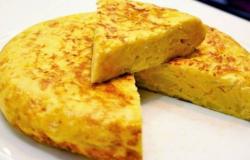
If there is a fundamental food that has accompanied humanity for thousands of years, it is bread. Even before cereal cultivation was domesticated, there are already indications of its existence for human consumption. Specifically, crumbs from about 14 billion years ago have been found in the northeast of Jordan and, although scientists suspect that, at that time, it was a product of occasional consumption, since then its consumption has not stopped growing throughout history. . Only recently, in recent decades, has bread begun to lose its central role in the diet, accused, among other things, of being unhealthy and helping to gain weight. Some experts consulted clarify that there are loaves and loaves, and depending on which one is in front of us, it can play a different role in health. Bakers insist that it is a healthy and digestive meal if, instead of a quick, low-cost and highly industrialized bread, you opt for a slow preparation, with whole grain and cultured sourdough. And be that as it may, you don’t gain as much weight as you’re accused of, nutritionists warn.
In Daniel Jordà’s workshop, the smell of freshly baked bread runs through the premises from end to end. Tied to a floured apron, he has been kneading dough since two in the morning to serve 15 different varieties in his bakery in Barcelona, Panes Creativos. “I was born in an oven. I am the third generation of bakers,” he explains. The artisan advocates “differentiating oneself with the quality” of the product. And how do you know which is good bread? Jordà responds: “When you go to a place that smells like bread, that means they do things well. And the breads, that do not have so much volume: you have to sacrifice beauty for quality.”
According to the Ministry of Agriculture, Fisheries and Food, in 2022, Spaniards consumed 1.3 million kilos of bread (almost 28 kilos per capita), but this figure has been declining for decades: in 1964 annual consumption per inhabitant was 92 ,5 kilos; in 1976, just over 76; and in 2008, it was 47 kilos. Ángeles Carbajal, professor of Nutrition at the Complutense University of Madrid, explained in an analysis in 2016 that, in the sixties, there was “one of the best diets,” but since then “unfavorable changes have occurred that have had very serious repercussions.” negative for health.” “The consumption of foods of plant origin and especially cereals and bread has been reduced considerably. This decrease has been at the expense of the increase in other more processed foods rich in fat, saturated fat, cholesterol, sodium, simple sugars and with greater caloric intake and lower nutrient density and which have contributed to the deterioration of the nutritional quality of the diet. ”. Regarding the cause, the researcher cites another article that warns of the “dietary advice” of some specialists that, “in the face of a patient’s intention to lose weight, the immediate axiom is: ‘Don’t eat bread.’” “It is still another myth to consider bread as the exclusive culprit of weight gain. But, in addition, leaving human beings without bread is depriving them of one of the resources and foods that have sustained and accompanied them throughout their life and history,” points out that reflection published in the magazine Food, Nutrition and Healthfrom the Danone Institute, in 2010.
Carmen Vidal, professor of Nutrition and Bromatology at the University of Barcelona (UB), emphasizes this line and assures that there is “a dimensioned perception of the calories” that accompany bread: “It has been associated with a product with many calories when it is not It’s like this: what goes inside the bread has more calories than the bread itself.” The researcher also recalls that in recent years, “to try to reduce the amount of salt in the body, the salt content in the flours used to make bread has been lowered.”
In nutrition, nuances are key, points out Jordi Salas-Salvadó, professor of Nutrition at the Rovira i Virgili University and principal investigator at the Networked Biomedical Research Center (CIBER) for the Pathophysiology of Obesity and Nutrition: “The epidemiological studies that attempt Looking at the relationship between bread consumption and body weight, they usually see that people who consume bread more frequently have a greater risk of obesity, diabetes and weight gain. The problem is that these studies are done with current bread, which is not the same as traditional bread, with sourdough and long fermentation: bread has a high glycemic index, but artisanal bread has more fermentation process and that makes it the glycemic index is lower.”
In fact, in a 2013 scientific review regarding the link between bread consumption and weight loss, researchers from the University of Las Palmas de Gran Canaria concluded that “reducing the consumption of white bread, but not whole wheat bread, “Within a Mediterranean-style eating pattern, it is associated with less weight gain and abdominal fat.” “It seems that the different composition between whole wheat bread and white bread varies in its effect on body weight and abdominal fat,” the authors noted. Salas-Salvadó insists: “The great message is not to stop eating bread, but to eat whole wheat bread.”
The baker Jorge Pastor, an expert in innovation and research in baking and former president of the Richemont International Club, a sector group that promotes quality breads, is blunt about the link between bread and weight gain: “We stopped eating bread, but obesity has been triggered. This food is not responsible for obesity. Bread-replaceable foods are not better, they are worse.” Salas-Salvadó recalls that obesity is “multifactorial”, where dietary factors combine with a sedentary lifestyle, sleep quality and exposure to endocrine disruptors: “It cannot be explained by bread. White rice, potatoes and white bread are high glycemic foods, but it doesn’t mean they are bad, it depends on how much you consume them and if you consume them alone. In the end, what we eat is a multi-food diet. “It is difficult to isolate one of them from the rest,” he points out.
Fundamental food
In the eyes of specialists, bread is key to nutrition. “It is a fundamental food. No one can think that such an essential food is not good, suitable for consumption and easily digestible,” defends Pastor. Along the same lines, Rosa del Campo, a microbiologist at the Ramón y Cajal Hospital in Madrid, agrees that bread “has been linked to human beings all our lives and is part of the diet.” However, the scientist, who has studied the impact of bread on the ecosystem of microbes that populates the intestine, warns that “industrial breads contain emulsifiers that kill many bacteria in the intestinal microbiome.” There are many types of bread and you have to be careful when defining which one is the healthiest, these specialists point out.
To break down the role of bread in the diet and its impact on health, some of the experts consulted propose starting by breaking down what kind of bread citizens eat. Pastor advances that, “95% of the bread that is eaten is made of bread-making wheat.” That is, “low-extraction wheat, refined, flour from which the crust has been removed, which is the most valuable part of wheat,” he explains. “We eat almost exclusively low-extraction wheat and this has never been the case. In the countryside there are more than 9,500 different varieties of cereals and bread-making seeds, but the amazing thing is that, although the source of ingredients has been infinitely variable, we only eat one type. Biodiversity in bread food does not exist,” he reflects.
In practice, therefore, the same type of wheat is almost always used to make bread and, in addition, the food manufacturing process has been mutating until, in many cases, it loses essential procedures to achieve quality food, they warn. The experts. Traditionally, the bread that has accompanied human history was made by combining water and flour from some cereal (wheat, for example), a mixture that was subjected to a spontaneous acidifying fermentation to naturally grow lactic bacteria and yeast there. However, this classic process was losing weight after the appearance of industrial yeasts and techniques to accelerate the processes.
Pastor differentiates between “slow breads”, made with cultured sourdough, without yeast and with a fermentation process of about 24 hours; and “quick breads,” which are cheaper and use industrial yeasts to speed up the manufacturing process. Choosing one or another way of making bread triggers two completely different nutritional and health paths, he says. “Quick bread is what we continue to consume in Spain: low-cost bread, highly industrialized, with few personnel. A two-hour bread, very fast, that has no bacterial activity or sourdough [esa mezcla de agua y harina ya fermentada de forma natural]. To make breads that withstand these processes, the stress of the machine, you need flours with a lot of gluten. “We eat quick bread with a high gluten content and gluten is highly indigestible for a percentage of the population,” he says.
On the other hand, a “slow bread” does not need flour with such high protein content. “Instead of using flours with 15% gluten proteins, you can use 8% flours. Making bread with cultured sourdough is a slow process, with a high presence of lactic acid bacteria, where the sourdough reduces sugars and eliminates indigestible parts. And that is closer to the concept of healthy bread,” explains the expert.
Potential impact on the microbiome
A study with mice in which del Campo and Pastor participated compared the impact of an “industrial” bread, with wheat flour and a two-hour fermentation process, versus a “Celtic” bread, with a flour composition of five hours. cereals and five types of grain and a whole day of fermentation. The research revealed that industrial bread “causes significant changes in the intestinal microbiome of mice.” “The healthy properties of bread seem to depend on its ingredients and the manufacturing process,” they concluded.
Along the same lines, a pilot study tested the prebiotic potential of bread with thirty patients who were in remission of their ulcerative colitis, a disease that causes inflammation and ulcers in the membrane that lines the rectum and colon. The research compared the impact between traditionally baked breads with those made with modern procedures and found that traditional bread making “has a potential prebiotic effect” that improves intestinal health.
Del Campo emphasizes that slow bread “is prefermented by microorganisms and is easier for digestion.” But health changes, if any, are subtle. “This is not appendicitis. You’re not going to eat the bread and pass out. But people already tend to have a weaker, more impoverished microbiome and do not digest gluten well and cause inflammation. So, since the microbiome is weakened, by eating that bread, we weaken it more and that is a problem,” he assures.
Vidal, however, maintains his misgivings about the possible impact that various types of bread may have on health. He doesn’t believe, in fact, that the manufacturing process or the raw material makes much of a difference to health. “From a health perspective, whether it is prepared in one way or another does not have much influence. The components are the same. White bread and refined flour have been questioned a little and yes, whole wheat is better, but that does not mean that refined flour is bad,” agrees the UB professor.
In this sense, he also asks for caution with the interpretation of research that finds a link with the intestinal microbiome: “Sourdough serves to improve flavor, but finding differences in health in the microbiome, which is so complex, seems to me that “It’s forcing the machine a little,” he says.
You can follow EL PAÍS Health and Wellbeing in Facebook, x and instagram.





